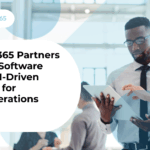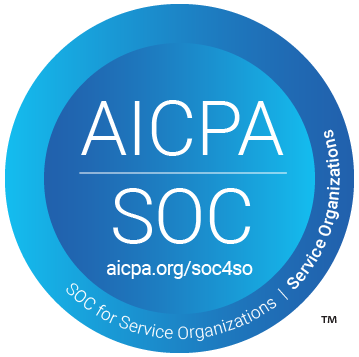Every company feels pressure to “do something with AI.” Boards demand progress. Vendors promise transformation. Competitors boast about success stories. However, many of these efforts end up as fragmented tools, redundant agents, and disconnected intelligence.
The goal isn’t to add more AI. It’s to give your organization a brain.
Why Every Enterprise Needs a Brain
Technology already scales the digital side of business. Robotics and automation scale the physical. But as John Michelsen put it,
“To unify both, the enterprise needs a singular brain, a fabric that weaves human and machine capabilities together.”
Most companies don’t have that. They have siloed solutions—ERP, CRM, e-commerce—each acting as a small pocket of intelligence. Your CRM knows customer interactions. Your ERP tracks orders and payments. Your e-commerce system processes transactions. But none of them can think together.
Chris Kraus describes it well:
“Those systems act as individual agents, each specialized but disconnected. You can have 30 agents, but that doesn’t help when you need to reason across them. Large language models don’t solve that either. They’re great for language, not coordination.”
This is where most AI strategies fail. They automate isolated tasks but don’t create organizational reasoning. A cognitive enterprise does. It connects data, logic, and action so the company can respond as one organism—like a brain.
The Three Functions of a Cognitive Enterprise
A cognitive enterprise performs three essential functions: memory, reasoning, and action.
Memory gives the organization continuity. It connects systems, documents, conversations, and decisions into a single source of truth. Most companies overlook this. Their knowledge lives in silos, scattered across tools and people. “We have to purposefully construct the memory of an organization,” John said. “If you’ve got 30 agents, each with its own data store, you’ll never achieve cross-functional understanding.”
Reasoning determines how the enterprise makes decisions. It defines what should happen automatically and what requires human judgment. As John explained, “We may fix a problem instantly for our best customer but handle it differently for a small first-time order. That’s reasoning—understanding when and how to act.”
Action is where decisions turn into outcomes. The cognitive enterprise doesn’t just know what to do—it executes intelligently. It automates the routine and elevates the exceptions. “Even our CEO has a board,” John said. “No one operates without oversight. Why should a model?”
That’s the essence of a cognitive organization. It understands context, acts autonomously within rules, and calls on people when human judgment is required. “Technology should be invoking us, not us invoking technology,” John added. “You’re one of the organization’s capabilities. The enterprise brain should call on you when it needs something you can do.”
How to Build It
John pointed out where enterprises make their first mistake: “Leaders often begin with the hardest problem they can find. That’s always a struggle.”
The right approach is incremental. Start small, but start smart. Identify repetitive processes that drain time and add cost—often back-office operations or customer support use cases. Automate those first, measure the impact, and reinvest the results. “Let that first project make money for you, then fund the next one,” John said. “Momentum builds. Each project becomes faster and more valuable.”
The key is to platform your agents. It’s fine to deploy multiple solutions, but they must share the same memory and orchestration fabric. A true platform becomes the enterprise brain—carrying context across every system and process.
Chris explained, “That platform is your brain. It carries memory across multiple tasks so processes can correlate and build context. Without that, you’re either chasing magic or thinking too small. The sweet spot is in the middle—connecting related processes that learn from one another. That’s where orchestration and acceleration begin.”
When your platform shares memory and reasoning, every new agent makes the entire organization smarter. If you add agents without having them contribute to your enterprise’s total knowledge, you create more fragmentation by expanding the number of disconnected endpoints, apps, and agents.
Thinking Systematically
Building a cognitive enterprise isn’t about chasing AI hype. It’s about thinking systematically and laying a foundation that will still make sense years from now.
Ask yourself:
- What decisions can I make today that I’ll still stand behind next year?
- How can my organization learn from every transaction, meeting, or document?
- Where can I start connecting people, systems, and AI around a shared understanding?
When memory, reasoning, and action align, your organization stops reacting and starts thinking. It anticipates outcomes. It adapts faster. It scales decisions with context and precision.
John goes further: “We want machines to run the business, not people to carry out every task. The cognitive enterprise extracts tribal knowledge, learns patterns, and automates what we already know how to do. When something new happens, it asks us what to do next.”
That’s the future of business intelligence—not dozens of disconnected tools, but one connected brain.
The companies that lead the next decade won’t just use AI. They’ll think with it.
Links and Resources
- Conversation Agent, Krista Software
- AI Use Cases, Krista Software
Speakers
Transcription
Scott King
Hey everyone, this is Scott. Thanks for joining this episode of The Union Podcast. I’ve got my usual cast of characters, Chris and John. Hey guys.
Today we want to talk about organizational brains, or cognitive enterprises. John, you’ve talked to us before about the brain of an organization or a cognitive enterprise. I think you got this from Star Trek or something. What exactly do you mean? Then we’ll dig into why this matters and whether it’s a good or bad thing.
John Michelsen
I think I have to give first reference credit to IBM. They published a document at least ten years ago, so this isn’t a new concept. We’ve also borrowed the analogy from Star Trek. Saying “cognitive organization” immediately puts you in the geek room, and that’s fine. Back then I didn’t mind it when I was doing research. It was informative to what we’ve built with Krista and very much aligned with our mission.
But today, I almost feel like I’m the cool kid at the party when I start talking about cognitive enterprises and how AGI is part of it. It’s amazing how far we’ve come. So yes, first credit goes to IBM.
The idea is that technology can scale the digital aspect of a business, while robotics can scale the physical aspect of what a business needs to accomplish in ways we’ve never seen before. We already have ubiquitous networking, IoT, and of course people—the most important part—driving the vision to accomplish that scale both digitally and physically.
For that to happen, the organization needs a singular brain. It won’t be feasible otherwise. I’m talking in a meta sense, but there has to be a unified fabric that weaves human and machine capabilities together so they can carry out outcomes effectively. Without that singular notion of a brain—the cognitive organization—you’ll end up suboptimized and incapable of achieving certain outcomes that others who do understand it will.
This isn’t a different message from what you’ve heard us talk about before. You’re probably tired of the Star Trek analogy. But what we’re really describing is the cognitive enterprise. That’s the capability that allows you to build what’s essentially a brain for the organization. We’ll get into the ingredients of that next—what it means and why we think about it as building a brain when you set out to become a cognitive organization.
Scott King
Depending on the size of your organization, you’ll have different packaged applications—ERP, CRM, or e-commerce platforms. Wouldn’t those be the brain of the organization? Or are they just parts of it?
Chris Kraus
Those are parts of a brain. You’re talking about very specific point solutions. Our brains have many parts—some operate automatically, and others are for active thinking.
A CRM, especially with AI, knows a lot about customer relationships, marketing campaigns, and touchpoints. An ERP knows about orders, accounts payable, receivable, and reporting. Your e-commerce platform focuses on ordering, but it doesn’t know anything about supply chain or warehouse management.
You can have multiple systems like that, but the problem is they act as individual agents. Many companies think, “I’ll get 30 specialized agents,” but that doesn’t help when you need to ask questions across multiple systems.
Large language models don’t magically solve that either. Generative AI is great for language and question answering, but it can’t coordinate multiple processes. The brain of an enterprise has to do many things at once, just like ours. We can walk, talk, chew gum, and breathe all at the same time. Some actions are automatic, others are intentional.
If you think about those point solutions, they’re not connected. Some run in the background, some don’t, but overall, it’s an anti-pattern. Having 30 agents doesn’t help you move from one place to another because they all know different things. Nothing orchestrates across them—just like in your Star Trek analogy, John.
John Michelsen
Since we’re talking in analogies, we don’t have to be too precise with labels. But it’s true, we can think of individual systems as participants in the organization—like limbs and arms that need orchestration. They don’t have memory themselves, but they need direction to make their contributions meaningful.
A brain is useless if it can’t connect to and control the systems that make the body function. Thinking of it this way, the enterprise brain needs that same connection between its systems and processes.
The study of the brain is enormous, and we won’t try to cover it all here, but we can simplify it into three essential concepts. These map directly to what an organization needs to become a true cognitive enterprise.
The three core functions of a brain are memory, reasoning or decision-making, and action. Those are clearly what our brain does. It triggers actions—not necessarily performing them directly—which is why I described systems as arms or legs.
The key to this is memory. All three are important, but as an industry, we often fail to recognize that we must purposefully construct the memory of an organization.
If that memory is siloed—if you have 30 agents, each with its own platform and data store—you have no unified way to address complex, cross-functional activities. For a cognitive organization to act on behalf of its history, culture, and goals, it has to understand context. It needs to recognize what must always be done in a certain order, what has flexibility, and what drives one path versus another.
For example, if you make a mistake on an order for a loyal, high-value customer, you might go to great lengths to fix it. But if it’s a small order from a first-time customer and it’s unclear who made the mistake, you’ll handle it differently. That’s organizational reasoning.
You won’t get that from a pre-built model. The “P” in GPT stands for pre-trained, which means it’s not trained on your organization’s memory or behavior. A cognitive enterprise must have a memory available to its AI systems—a shared understanding of how the organization behaves in specific circumstances.
And to be clear, there are times when a model can’t decide what to do. Agentic platforms outside of ours often miss that. Sometimes, compliance rules or contractual obligations dictate exactly how we respond. Maybe Scott has to approve something before we proceed or before we add a certain value. These rules are immutable.
That’s why we think of the enterprise as a brain. Its memory is key. It includes the automatic, “autonomic” actions—the things the organization knows how to do without conscious effort. Those are the triggers that run automatically and produce consistent outcomes.
Then there are unique, one-time situations that require reasoning—asking, “What’s the right answer here?”—and then acting accordingly.
This is why weaving human capabilities with machine capabilities is so critical. No single product can do everything, but being interconnected allows the organization to understand full context, make appropriate decisions, and trigger the right actions.
Some of those triggers involve people. We often say there’s a huge market for tools that sit on desktops and help people with specific tasks. They’re great. We use them. But Krista isn’t oriented that way.
The cognitive enterprise concept tells us that technology should be invoking us—not the other way around. You’re one of the capabilities of your organization. When the enterprise brain needs something you can do, it should call on you, not wait for you to call on it.
From Krista’s perspective, you are a capability, just like a system. To achieve the outcomes it’s tasked with, the enterprise needs to be able to invoke you.
Scott King
You were talking about memory, and it made me think about what happens when you hire a new employee. They have no memory of the organization. In the future, when we add new agents, they’ll face the same challenge unless they can leverage what you’re describing—the cognitive brain.
So is there a correlation between a new employee’s ramp-up time and an agent’s ramp-up time?
John Michelsen
There could be, but that’s also the fundamental problem. If we need the same amount of time to educate every agent we onboard, we’ll never reach a steady state of optimal performance.
As we deploy across the organization, we have to connect to all the critical areas of content that form the enterprise’s memory. We’ve talked about these in previous podcasts—your systems, your file repositories like SharePoint or Google Drive, your meetings, your group emails, and the constant flow of documents moving in and out of the business. All of those make up organizational memory.
If an agent is deployed without access to that, you end up relying on endless prompt engineering to teach it how your organization behaves and when to act.
I was on a call yesterday where someone explained how they built an AI agent in IT using Gemini. When an alert comes in from one of their environments, they send it to the agent, which knows how to query Kubernetes, run commands, or reset services. If it gets a certain alert, it decides whether to query, restart a pod, or even reset an entire service.
That’s great, but what you really need is for those alerts to automatically trigger the appropriate actions—not for someone to manually send alerts to the agent. You need something that weaves those capabilities into a fabric where the response happens as part of a larger orchestration.
For example, if there’s an alert, I don’t want just the agent to know. I want the IT leader to know, too. If resetting the entire environment is a possible response, that needs to involve human approval. No one should be able to unilaterally decide to restart an entire Kubernetes cluster.
Even our CEO has a board. No one operates in complete autonomy, nor should AI. Yet without proper memory and human-in-the-loop controls, these agentic systems could make critical decisions without oversight. That’s unacceptable.
The cognitive enterprise includes those checks and balances. It knows that before rebooting a major environment, the organization always validates the action first. It gives humans a few minutes to approve it, and if they don’t respond in time, the system proceeds with urgency—but not blindly.
You can apply this same principle everywhere. Maybe you’re deciding whether to cancel a customer’s loan, but you don’t know there’s been a mail service issue affecting deliveries. That’s context. The system must recognize these nuances before acting.
We want machines to run the business, but they must do so intelligently. AI should learn the patterns people perform every day—moving information from emails into systems, forwarding tasks, routing requests—and handle those automatically.
When something new or unusual happens, it should escalate to a person. “Hey, Sally, I’ve got something here. Can you help me figure it out?”
That’s what a cognitive enterprise is about: capturing tribal knowledge, building context and understanding, and enabling software to handle what we already know how to do while asking humans for guidance when it encounters something new.
Scott King
That sounds both far away and near at the same time. So if I’m a VP of IT or a CIO thinking, “John, this all sounds great, but I still have to run the business today,” what are the steps? Everyone’s being pressured to throw AI at every problem.
I like your “Reddit reasoning” comment because that’s not a cognitive enterprise—that’s someone else’s rant. But what does this look like in practice? Small steps or a Big Bang approach?
John Michelsen
We run into this question all the time. And not to turn this into therapy for me, but customers often think, “AI is big and complex, so let’s start with the hardest thing we can imagine.” That’s always a struggle.
We may sound like we’re anti–point solution, but the truth is, you can deploy multiple point solutions as long as you platform them. The danger is when companies rush into AI, signing on with 15 vendors who all carve off data in different ways. Then you’re stuck integrating everything repeatedly, at high cost, without gaining reusable value.
Instead, start in the center—focus on important business needs. Partner with someone who already does this well, who can demonstrate results and guide you through the process. That takes out much of the risk. Let that first use case generate measurable ROI, then use those returns to fund the next project, and the next.
Soon, you’ll be running three or four initiatives at once. Momentum builds. Each project becomes faster to deploy and easier to scale to more complex challenges.
It often helps to start in the back office. Those processes are usually repetitive and ripe for automation. But regardless of where you start—sales, contact center, operations—the key is to use the same platform and integration fabric across them all. Each new project expands the platform’s access to the organization’s memory, building toward that cognitive enterprise vision.
That’s the path forward. It lets you run your business today while setting up for where you want to go tomorrow. It’s not magic—it’s systematic thinking. Ask yourself: what decisions can I make today that I won’t regret a year or two from now? Start there.
Scott King
Chris, any closing thoughts on what John just said? He mentioned the idea of “platforming the agent,” which we haven’t discussed in detail here, though we did touch on it in the Chasing Agents episode. Any summary you’d like to share before we wrap up?
Chris Kraus
That platform John described is essentially your brain—with memory spanning multiple tasks. The difference between starting small and isolated versus starting with a few connected processes is that the latter builds shared memory and context across them. That’s what enables orchestration.
Without a platform that provides a central brain and memory, you can’t correlate those tasks or carry context forward. That’s where most people struggle. They either expect complete magic or they think too narrowly—focusing on a single microtask.
The sweet spot is in the middle. You need a platform that provides a brain with memory to orchestrate across tasks. That’s when acceleration happens—when each process learns from the others. Our platform helps organizations find that middle ground between overreaching and thinking too small.
Scott King
That’s a great analogy—it’s very Goldilocks. Some AI is too small, some is too big, but the right one is just right. And it goes well with your haircut, Chris.
Thanks, guys. I liked this discussion because context is everything. Hopefully, we helped everyone understand that thinking end-to-end is the right approach. See you next time.






